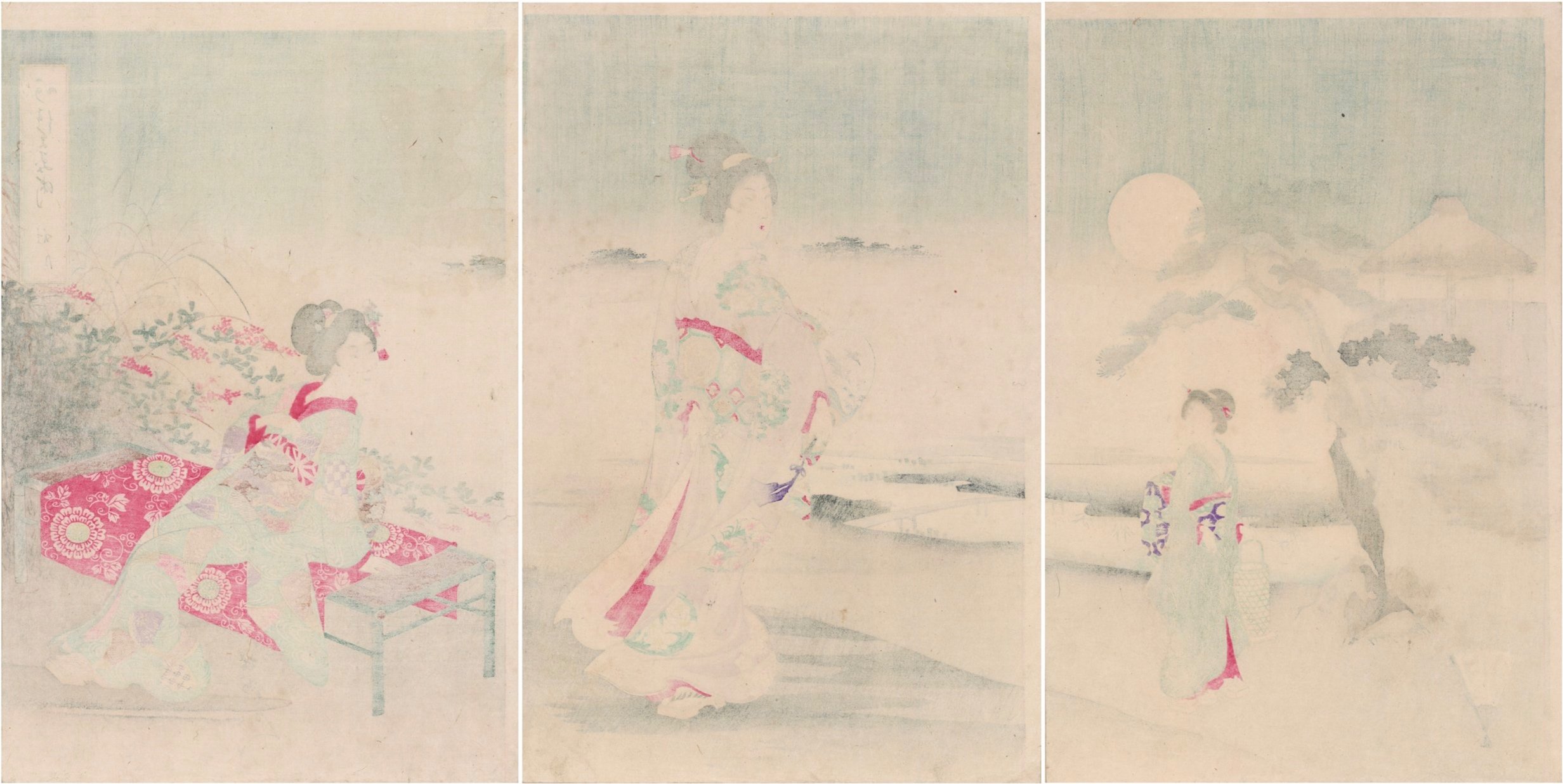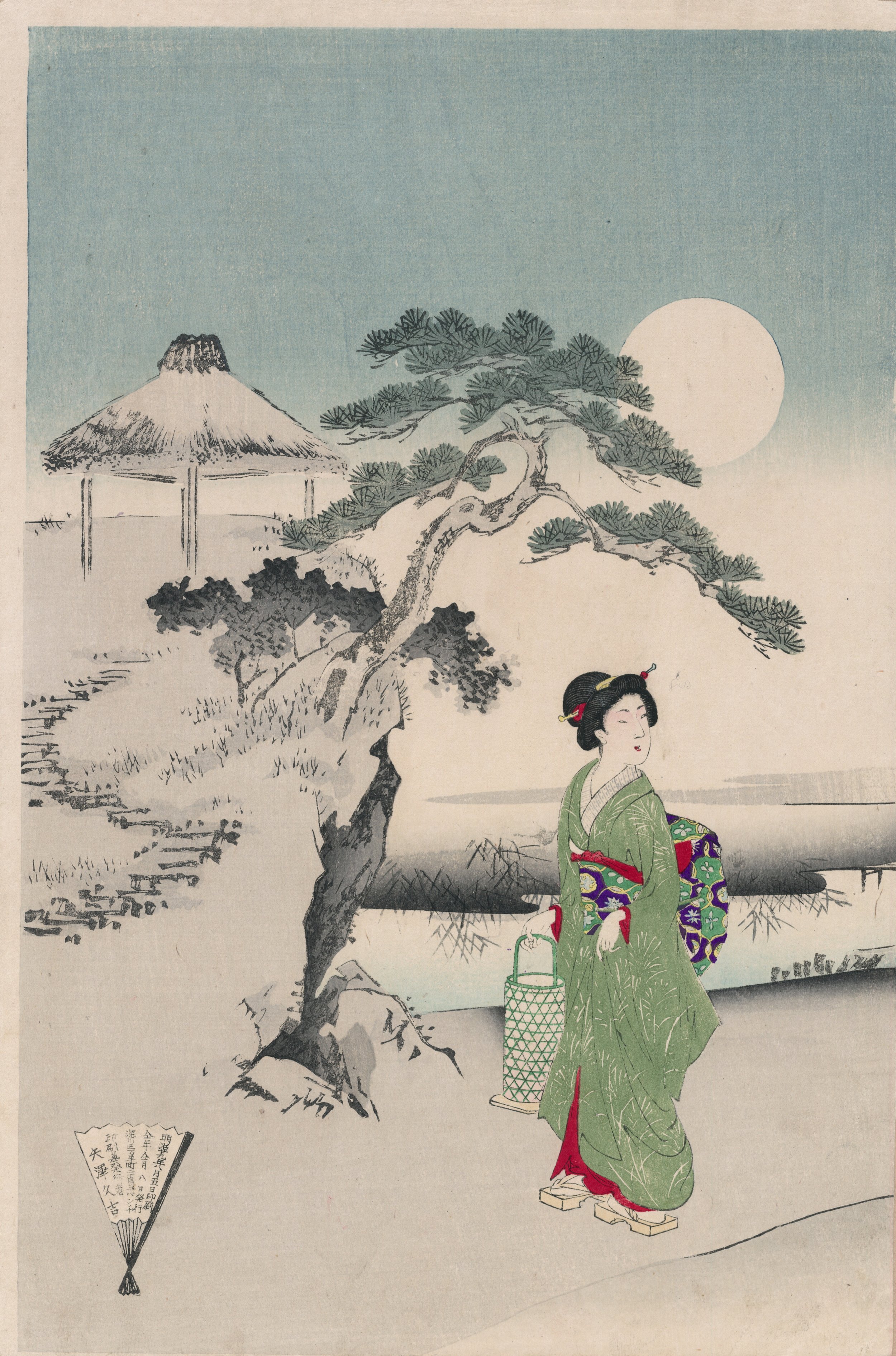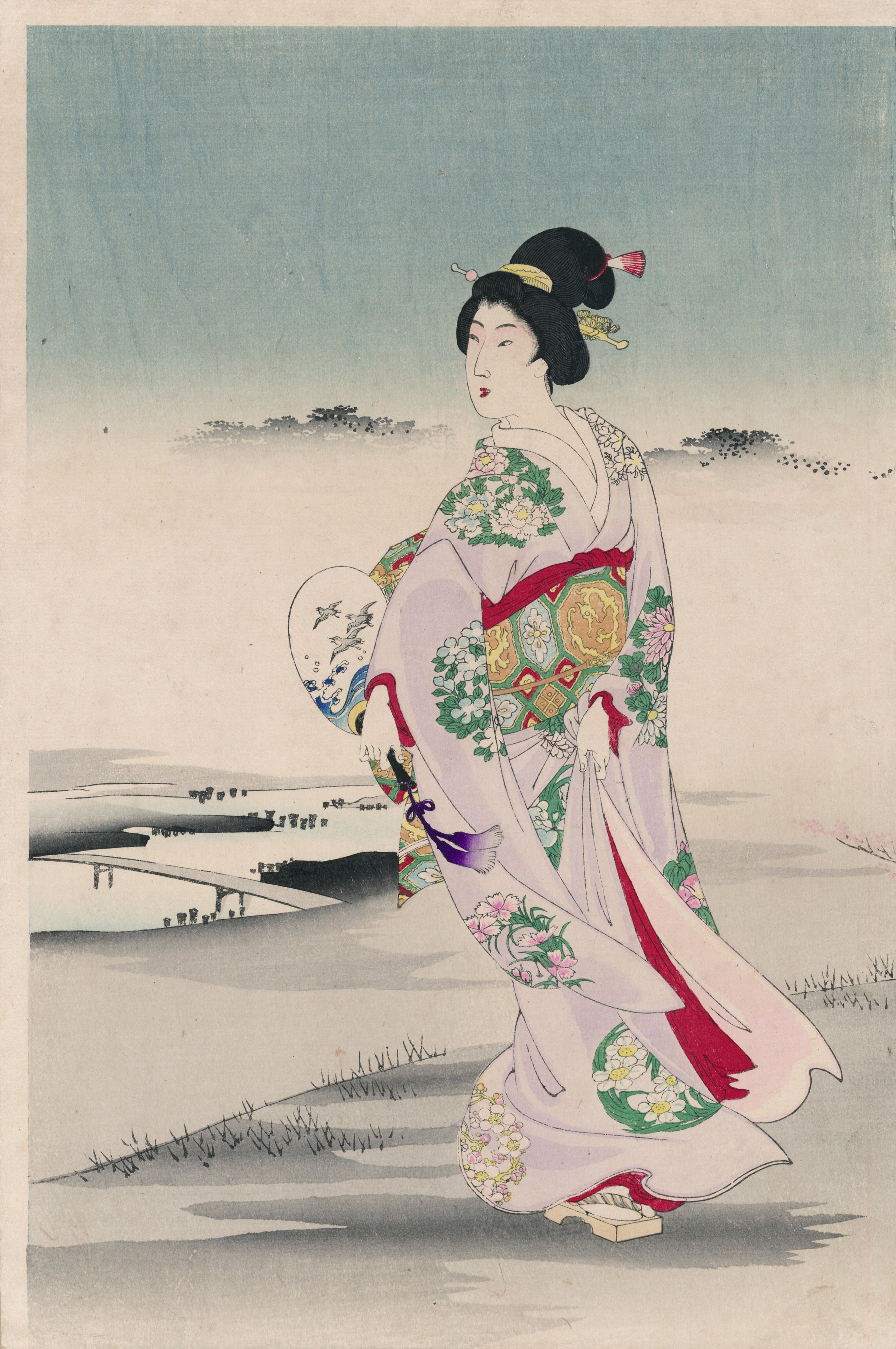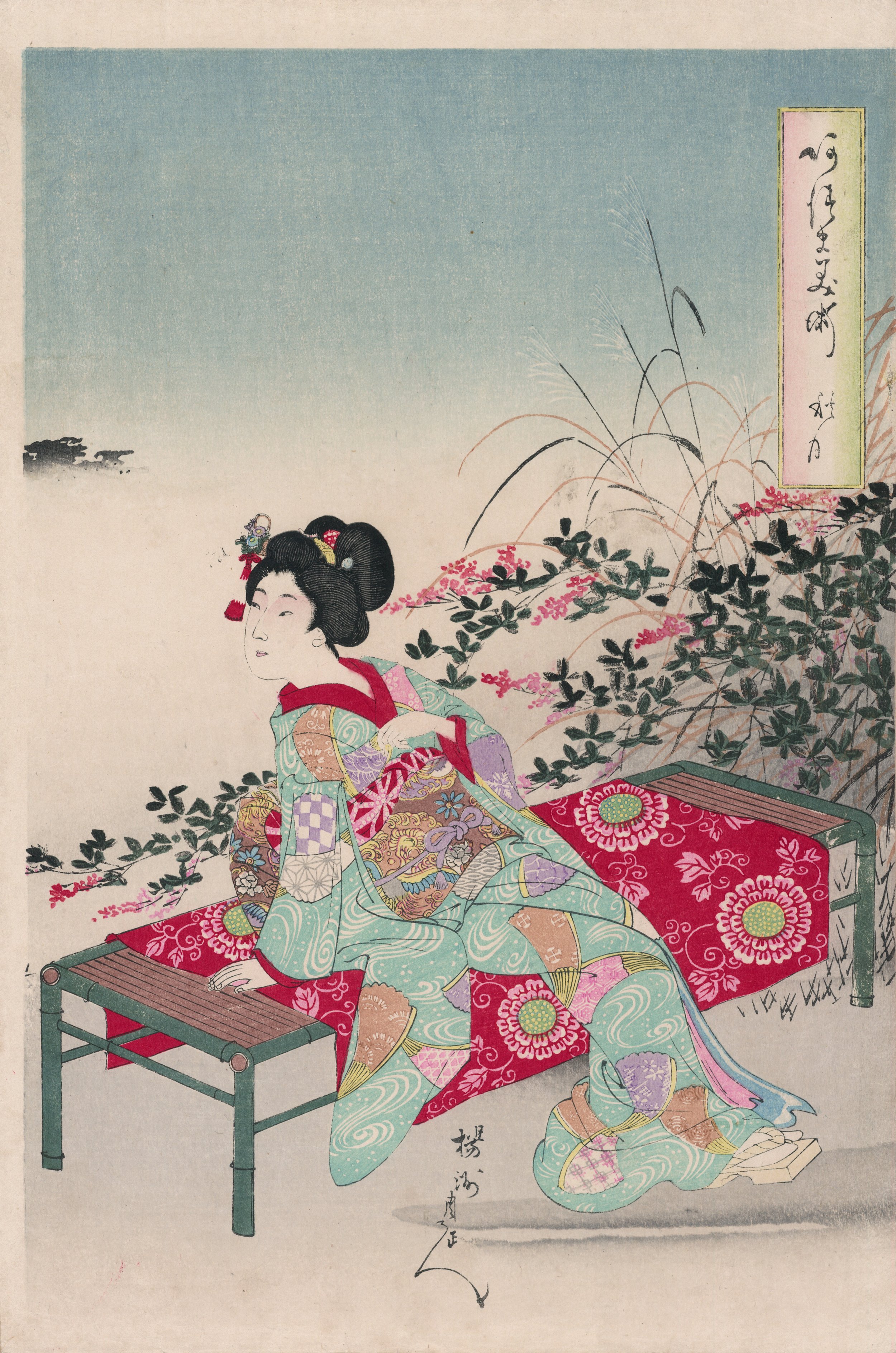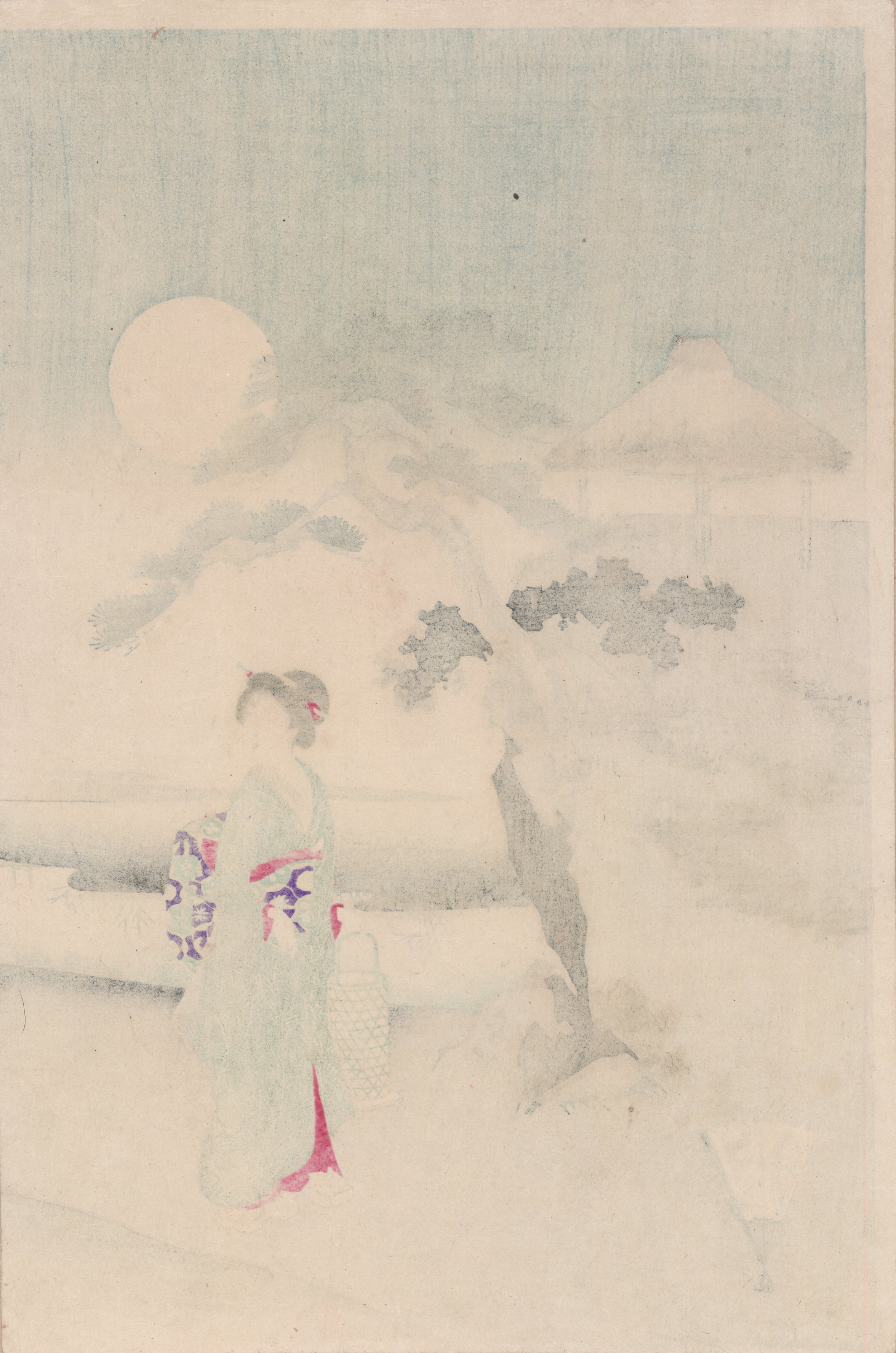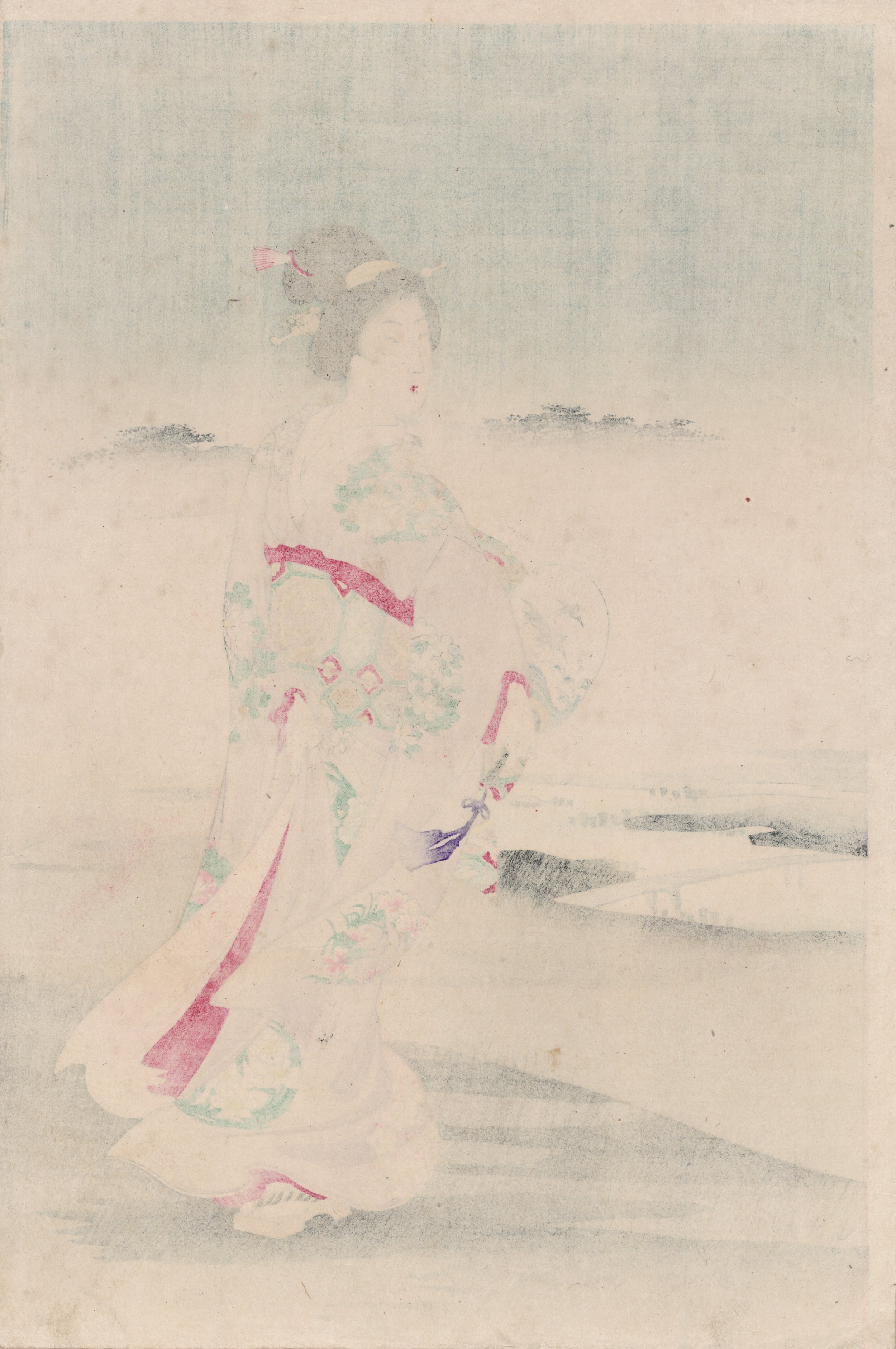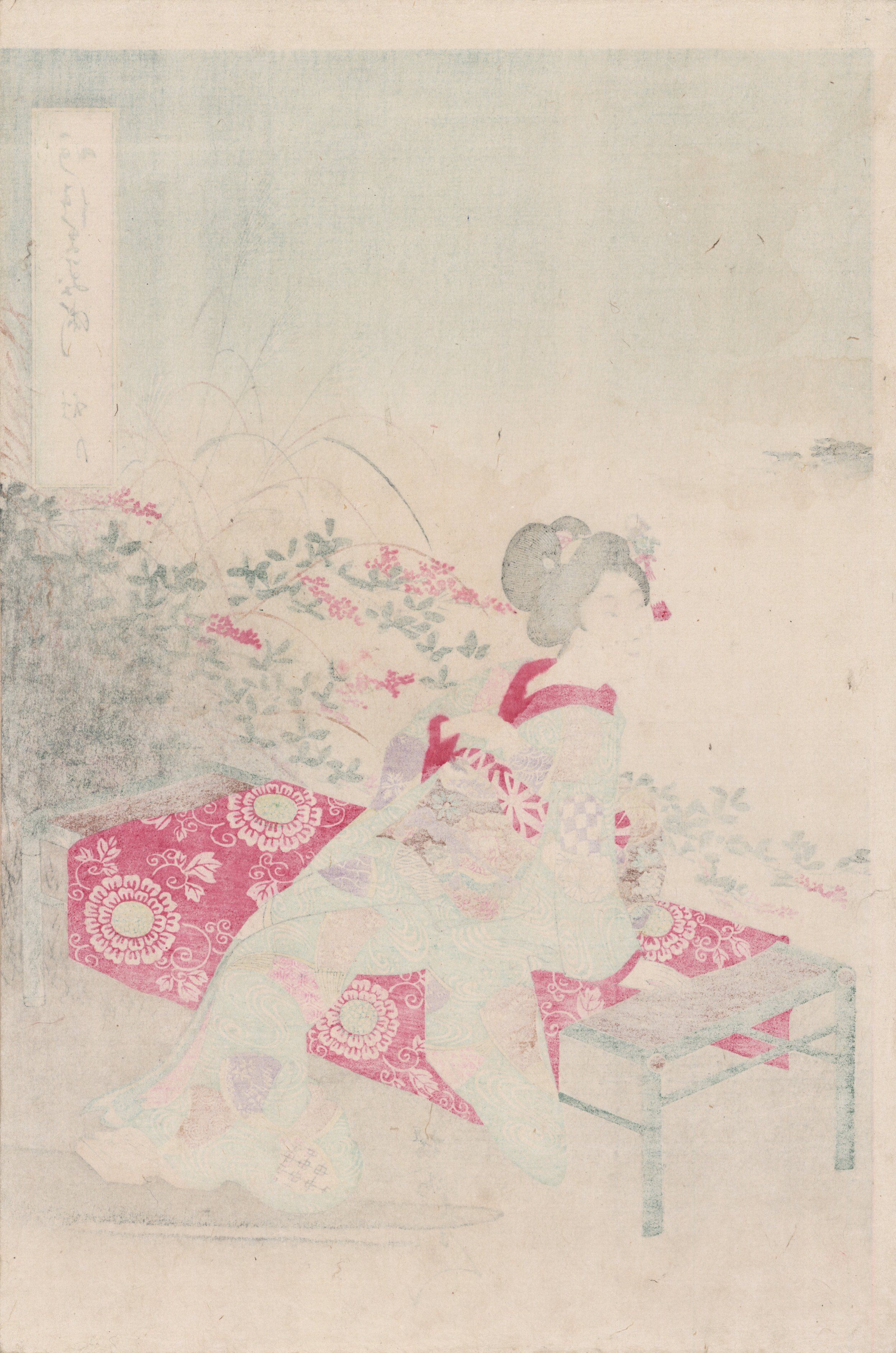Chikanobu | Autumn Moon
楊洲周延 Toyohara Chikanobu (1838–1912)
秋月
Autumn Moon
1896
木版画 | 三联续绘-纵绘大判 | 37.5cm x 25cm x 3
Woodblock-print | Triptych-Oban-tate-e | 37.5cm x 25cm x 3
品相非常好
Fine condition
$1,200
还有什么比月下美人更适合中秋的图景呢?
八月十五,中秋佳节,秋七草中的胡枝子与芒草在风中招摇着花穗。画面右侧,着一身清新流水折扇纹和服的姑娘搬来竹床,倚身回望天边一轮初升的圆月。而在中部,一位手执团扇的姑娘轻提被微风吹起的衣摆,与远处被夜雾渐渐模糊的河川相映成趣。左侧圆月下,周延加大了景物的占比,在以皴擦手法绘制了一幅月下松亭图后,又再添上了一位回眸一笑素雅青衣女子,使全画的结构饱满而不失格调,充分展现了周延在追摹古人笔墨意趣上的深厚功底。
Interested in purchasing?
Please contact us.
楊洲周延 Toyohara Chikanobu (1838–1912)
秋月
Autumn Moon
1896
木版画 | 三联续绘-纵绘大判 | 37.5cm x 25cm x 3
Woodblock-print | Triptych-Oban-tate-e | 37.5cm x 25cm x 3
品相非常好
Fine condition
$1,200
还有什么比月下美人更适合中秋的图景呢?
八月十五,中秋佳节,秋七草中的胡枝子与芒草在风中招摇着花穗。画面右侧,着一身清新流水折扇纹和服的姑娘搬来竹床,倚身回望天边一轮初升的圆月。而在中部,一位手执团扇的姑娘轻提被微风吹起的衣摆,与远处被夜雾渐渐模糊的河川相映成趣。左侧圆月下,周延加大了景物的占比,在以皴擦手法绘制了一幅月下松亭图后,又再添上了一位回眸一笑素雅青衣女子,使全画的结构饱满而不失格调,充分展现了周延在追摹古人笔墨意趣上的深厚功底。
Interested in purchasing?
Please contact us.
楊洲周延 Toyohara Chikanobu (1838–1912)
秋月
Autumn Moon
1896
木版画 | 三联续绘-纵绘大判 | 37.5cm x 25cm x 3
Woodblock-print | Triptych-Oban-tate-e | 37.5cm x 25cm x 3
品相非常好
Fine condition
$1,200
还有什么比月下美人更适合中秋的图景呢?
八月十五,中秋佳节,秋七草中的胡枝子与芒草在风中招摇着花穗。画面右侧,着一身清新流水折扇纹和服的姑娘搬来竹床,倚身回望天边一轮初升的圆月。而在中部,一位手执团扇的姑娘轻提被微风吹起的衣摆,与远处被夜雾渐渐模糊的河川相映成趣。左侧圆月下,周延加大了景物的占比,在以皴擦手法绘制了一幅月下松亭图后,又再添上了一位回眸一笑素雅青衣女子,使全画的结构饱满而不失格调,充分展现了周延在追摹古人笔墨意趣上的深厚功底。
Interested in purchasing?
Please contact us.
Toyohara Chikanobu (1838–1912)
Toyohara Chikanobu was born in 1838 in Edo and, obviously possessing talent, studied the Kanō school of painting. But his love was Ukiyoe. He studied with Kuniyoshi and, upon the master’s death, with Kunichika.
A samurai like his father, Chikanobu fought on the side of the Shogan against the Emperor Meiji as Japan moved unsteadily towards modernity, and was arrested when the Emperor’s forces triumphed. But by the 1880s he was free to pursue his art.
His work ranged from Japanese mythology to battles to women's fashions. A great many were triptychs, and some were quite garish in their choice of colors, as was the style in the waning days of Ukiyoe. His designs illustrating women’s fashion were especially interesting because they depicted the radical shift from traditional to Western clothing during the Meiji restoration and the changes in coiffures and make-up styles that accompanied them. When he drew women in traditional dress, it was a nod to the recent past, with a healthy dose of nostalgia. He died in 1912.


